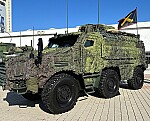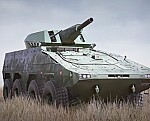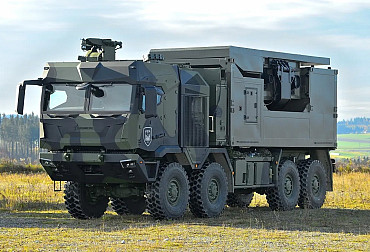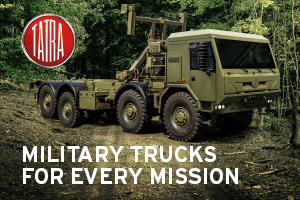Puma IFV – technological marvel did not see success on international market
The SPz Puma is a German heavy infantry fighting vehicle (IFV) developed in the 2000s by Krauss-Maffei Wegmann (KNDS Deutschland today) and Rheinmetall to replace the Marder IFV and support the Leopard 2 MBT. The vehicle entered service in 2015, and is operated solely by Germany.
The SPz Puma was developed to replace the SPz Marder in German mechanised infantry units (the Panzergrenadiertruppe). The programme began in 1998. The first prototype was delivered in May 2006. Five pre-production vehicles were delivered in 2007 and trials began in early 2008. In March 2009, the two pre-series Puma vehicles successfully passed the tests. In 2012, the Puma was tested against the cold in Norway and in 2013 against the heat in the United Arab Emirates. In 2015, after the crews had been trained, some Pumas entered service. The initial order for 450 vehicles, signed in 2009, was reduced to 350 armoured vehicles in 2012, and further 50 were ordered in 2023, with the deliveries starting by the end of 2025, with an option for enother 179 units.
Puma’s armament: 30 mm autocanon, 5.56 machine gun, EuroSpike missiles
The Puma is armed with a 30 mm MK 30-2/ABM (Air Burst Munitions) cannon and a 5.56 mm HK MG4 coaxial machine gun in an unmanned turret. The 30 mm cannon allows it to fire sub-calibre, fin-stabilised APFSDS-T shells, with high penetration capabilities and AHEAT (Advanced Hit Efficiency and Destruction) shells, which is a programmable explosive shell that projects several dozen small tungsten balls, mainly usable against aerial targets and infantry. The cannon is fed with a double belt, i.e. the shooter can alternate between two different belts, one containing armour-piercing shells and another containing explosive shells.
The Puma is capable of firing two EuroSpike LR missiles (a fourth-generation Israeli anti-tank missile of the fire-and-forget type) with a range of approximately 4 500 m and can change targets in flight. The turret is on the left side of the armoured vehicle; the cannon is on the right of the turret, and is therefore centred on the median axis of the chassis. The Puma is also equipped with a TSWA rotating ‘turret’ firing 24 lethal or non-lethal 40 mm munitions (for example, tear gas and flash-bang) with a maximum range of 400 metres.
One of the best protected vehicles in its class
Puma’s armour uses Advanced Modular Armour Protection, and it has two levels of protection. The first: the Puma A weighs 29.4 t, it is air-transportable by A400M: a group of four Atlas A400M aircraft can transport three Puma A, and the fourth aircraft carries the additional armour to raise their protection to level C as well as the equipment needed to install this armour. Puma A is resistant to 30 mm ammunition, to shaped charges at the front and to 14.5 mm from all directions (on all sides). The Puma C raises the Puma’s side protection to the same level as its front and improves its roof armouring, bringing its weight to 43 tonnes. An intermediate version, Puma B, had been designed, but since version C also met the dimensions and weight limits for rail transport, it was ultimately eliminated.
The Puma is equipped with several cameras for a 360° view. It also has a German-made APS Soft Kill, called Multifunctional Self-Protection System (MUSS) over 360°. MUSS is designed to detect and counter incoming anti-tank guided missiles (ATGMs) and other threats by using sensors to identify approaching projectiles and deploying countermeasures such as infrared jammers and smoke grenades to disrupt their guidance systems. This APS could be supplemented by Hard Kill in the future. The fuel tanks are located in different places, such as inside and outside the armoured vehicle. If one is hit, the vehicle can still fall back and retreat.
Almost all the equipment inside the Puma, including the seats, have no direct contact with the floor, which increases the safety of the crew and equipment in the event of an explosion under the vehicle (mines or improvised explosive devices).
Puma in the Bundeswehr
The primary units equipped with the Puma are part of the Panzergrenadiertruppe (armored/mechanised infantry), which integrates these vehicles into their operations for enhanced mobility, firepower, and protection. The Puma is fielded by several key formations, including Panzergrenadierbataillon 33 based in Neustadt am Rübenberge (this battalion was one of the first units to receive and operationally deploy the Puma); Panzergrenadierbataillon 92 based in Munster, another unit actively using the Puma as part of its mechanized infantry capabilities; Panzerbrigade 112 and Panzerbrigade 21 – armoured brigades that include Puma-equipped battalions as part of their structure within the Bundeswehr's rapid reaction forces and NATO commitments.
The Puma is intended to replace the older Marder IFV across various Panzergrenadier battalions, with the rollout ongoing as part of the Bundeswehr's modernization efforts. The vehicle is currently operated solely by the German Army because it was specifically designed to meet the unique requirements of the Bundeswehr, and its high cost (unit costs escalating from an initial €7.6 million to around €17 million due to development overruns, advanced technology, and upgrades), complexity (Puma’s cutting-edge features, such as its MUSS soft-kill active protection system, unmanned turret, and digital battlefield integration, require sophisticated logistics and training), and tailored specifications. Features like its modular armour (Level A for air transport and Level C for combat), advanced electronics, and integration with the German "Infantryman of the Future" system make it a bespoke solution for the Panzergrenadier units.
This customization reduces its adaptability for other nations with different needs or budgets have apparently limited its appeal on the international market. Thus, Croatia opted for Bradleys in 2016, while the Czech Republic rejected the unmanned turret solution and purchased the Swedish CV90. While the Puma IFV is a technological marvel, and arguably the most advanced IFV in NATO, it hasn’t translated that edge into global sales, leaving Germany as its sole operator.










